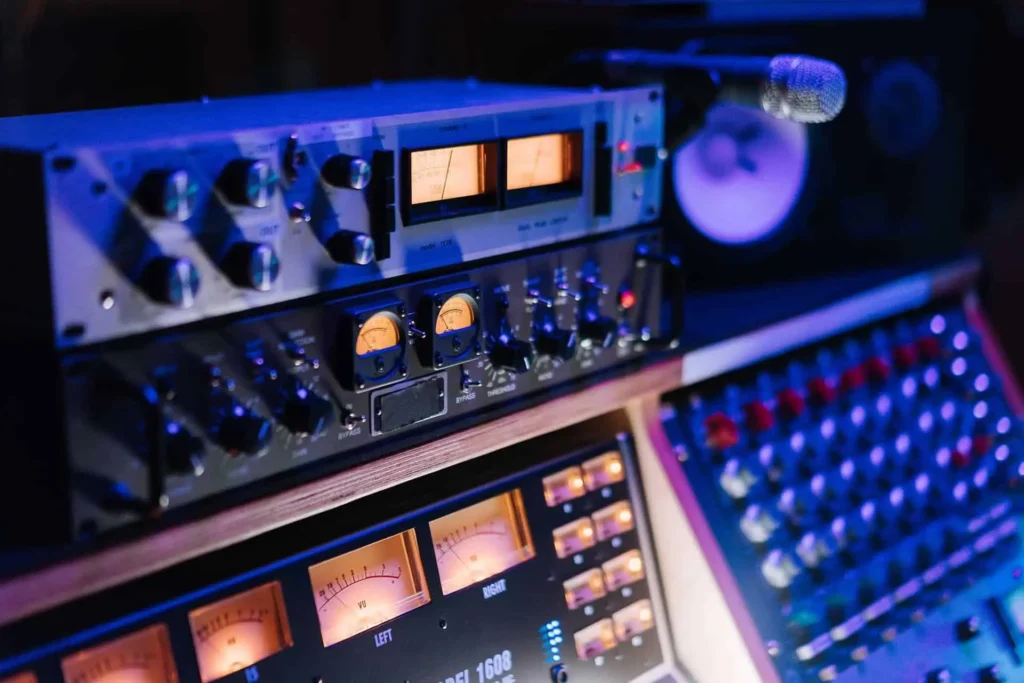Today we’re going to tell you how to change your look without making a mistake! Rebranding is a bit like changing your look. Imagine your brand going from an old, faded sweater to a bespoke suit. Sometimes you need to dust off, refresh and flaunt a brand new style. Whether it’s to rejuvenate your image, conquer new horizons or erase old baggage, a well-executed rebranding can transform the way your company is perceived. But beware: it’s a delicate operation that needs to be carried out with care and, above all, with a good dose of creativity.

Why rebrand?
If you think rebranding is as simple as changing a logo, think again! It’s a total overhaul, a complete facelift from head to toe to reposition the brand in the public mind. Here are a few good reasons to get started:
- Your brand image is outdated: Does your logo look like it was designed in the 90s? If so, it may be time to modernise. Trends evolve and so do audiences. To stay relevant, sometimes you have to rethink everything.
- New markets, new life: When a company decides to expand internationally or target a new audience, it becomes necessary to adapt its identity. What works in one country may not work elsewhere. A good rebranding will enable you to conquer new territories by being better understood and accepted.
- Escape a bad reputation: An image crisis, scandals or simply an embarrassing past? Rebranding is the solution for starting afresh. It cuts through the mistakes of the past and offers a new, fresher version of the brand.

Steps to successful rebranding
OK, now that we know why we’re embarking on a rebranding, let’s look at how to do it properly. Because rushing into something is the best way to fail.
Brand audit
Before changing anything, you need to understand what works and what no longer works. A brand audit is essential to find out what customers perceive, what you want them to perceive, and where the gaps are. It’s a bit like going to the doctor before a major operation, to make sure you’re not missing out on something important.
Defining your new identity
Let’s get to the heart of the matter. What new values do you want to embody? What message do you want to get across? This stage is crucial. This is where you choose the tone, style and soul of the new version of your brand. And there’s no question of doing things by halves! Think about the consistency between the visual identity, the audio identity and the strategic positioning. If you’re going from a corporate style to something more rock’n’roll, don’t keep your old suit-and-tie photos on your site! Because no one wants to see a brand that screams “modern” with a website from the 2000s. Make sure that every element of the brand – visuals, text, music, communication tone – is aligned.
Think about your brand’s sound identity
Haven’t you forgotten something? You’ve reworked your logo, revised your colours and maybe even changed your slogan, but there’s still something missing… Oh yes, the sound! Yes, these days,sound identity is like that song you have in your head all day long: it sticks. A well thought-out melody can transform the perception of your brand and make it unforgettable. Don’t believe me? Just ask Netflix with its famous “Toudoum” or the SNCF and its “Pam pam pa la”! So, for a rebranding that doesn’t just make a good visual impression, but also an aural one, it’s time to think about a musical signature. One that will resonate at every point of contact with your audience, whether on digital, for your brand film, your events, in-store… Don’t underestimate the power of your sound footprint.
Testing and validation
Think everything’s perfect? Not so fast! Before throwing everything out into the open, you need to test it. Yes, we’re talking about beta testing… but for your identity. Ask customers, partners and even your own staff what they think. This feedback could save you from making a big mistake.
The big launch
Once everything has been validated, it’s time to shine. The launch must be orchestrated with panache, like a Broadway premiere. Communicate your new positioning, explain why you’ve changed and how this rebranding will improve the customer experience. Above all, be consistent across all your channels: website, social networks, newsletters, advertising, etc.

Mistakes to avoid
Rebranding is not without its risks. Some companies have fallen foul of it. Here are a few pitfalls you should never fall into:
- Change for change’s sake: Rebranding just because it’s fashionable is like buying an electric scooter because everyone else has one… but doesn’t know how to drive it. If you don’t have a valid reason, don’t do it.
- Losing your identity: Change, yes, but not just like that. If your audience no longer recognises you after rebranding, you’ve gone too far. Keep one foot in what has made you a success, while adding a modern twist.
- Ignore feedback: Don’t think you know everything. Listen to your market, your customers and even your employees. They’ll tell you whether you’re on the right track or making a huge mistake.

Examples of successful rebranding
Finally, here are a few brands that have successfully rebranded and should inspire you:
- Peugeot: Yes, the car brand! In 2021, it modernised its logo by taking up the lion emblem, but in a more streamlined way. The result is a premium, futuristic image that echoes its ambitions for electric cars.
- Dunkin’: Formerly Dunkin’ Donuts, the brand decided to drop the donuts from its name to better reflect the diversity of its products. And it worked: everyone still associates Dunkin’ with its famous doughnuts, while appreciating the simplicity of the new name.
- Burberry: The rebranding of the famous English fashion house in 2018 made waves. By switching to a minimalist, modern logo, Burberry not only rejuvenated its image, but also attracted a new generation of customers while staying true to its DNA.

And finally…
Rebranding is a marathon, not a sprint. If you do it too fast or without preparation, you risk stumbling. But if you do it right, you could be the next success story everyone’s talking about. So, are you ready to make your brand version 2.0 of itself?
